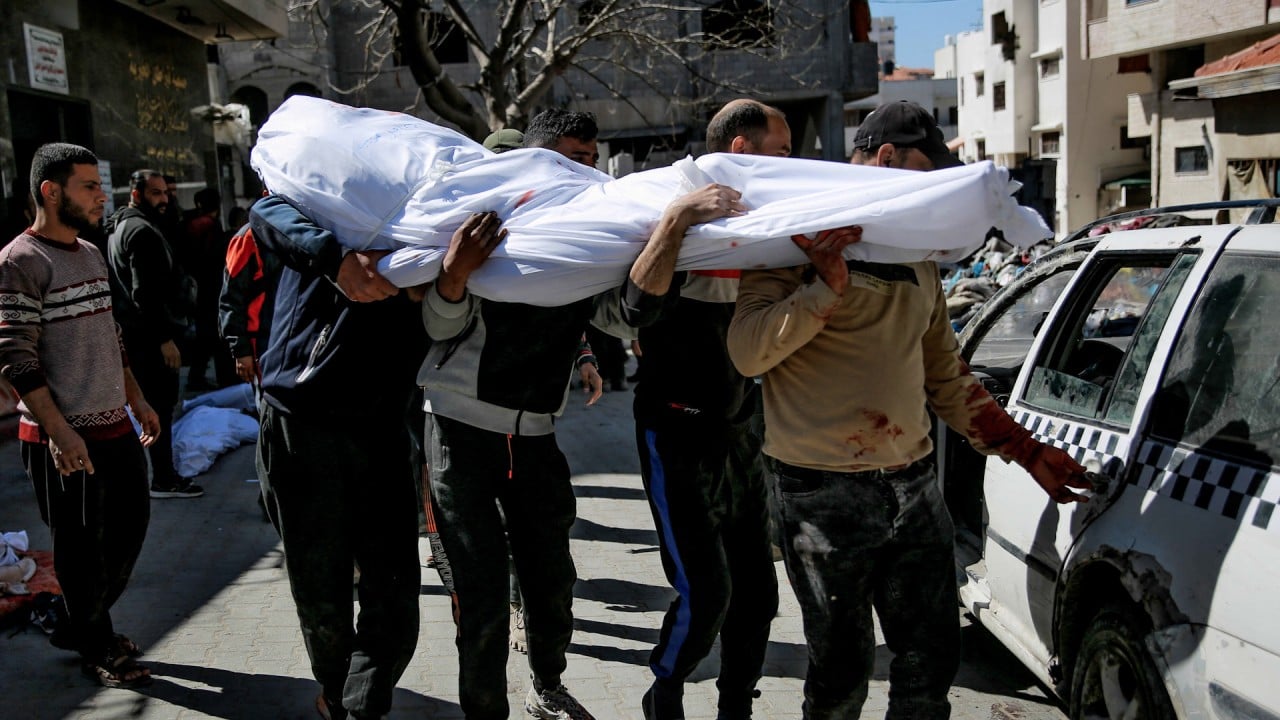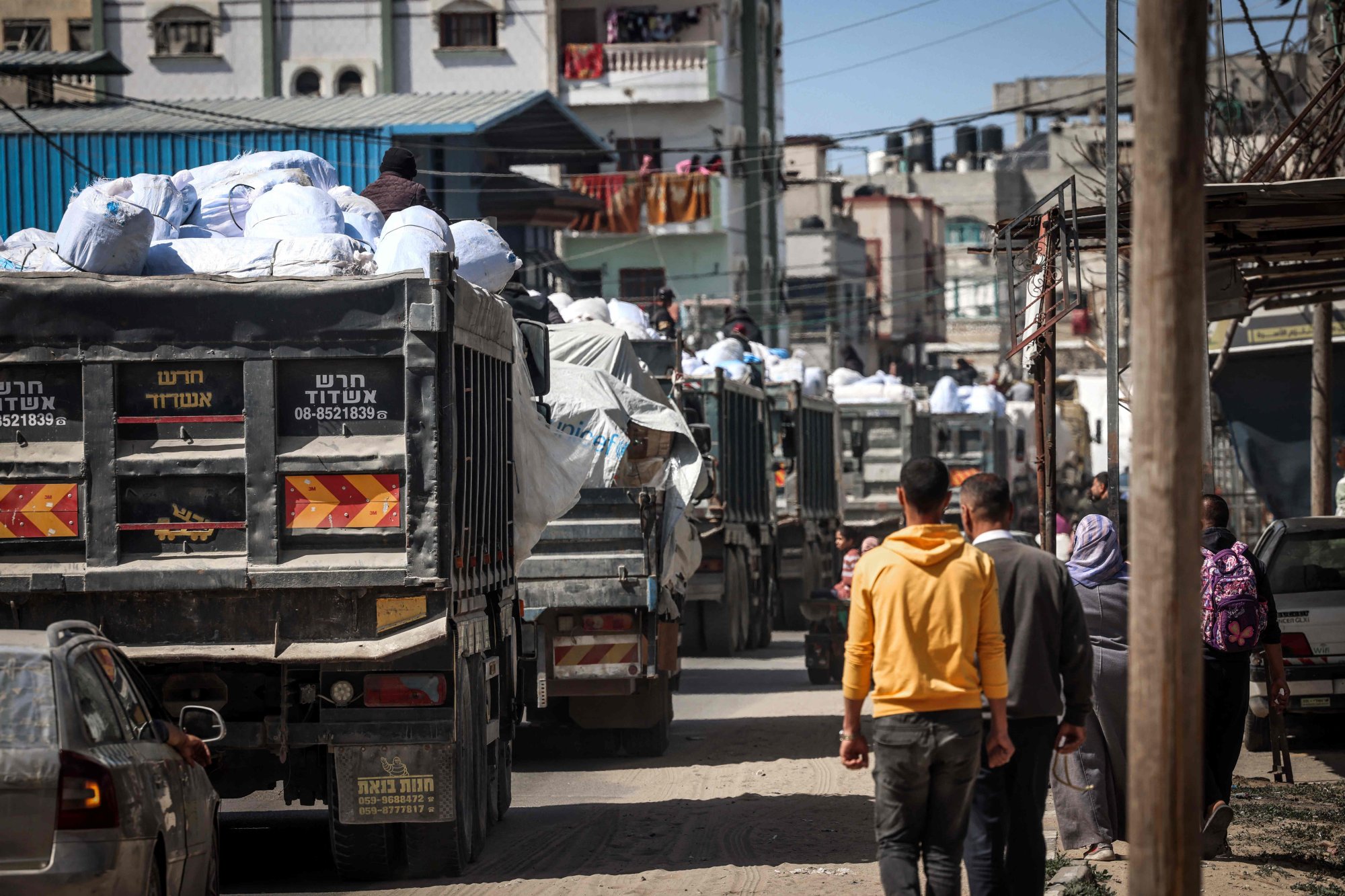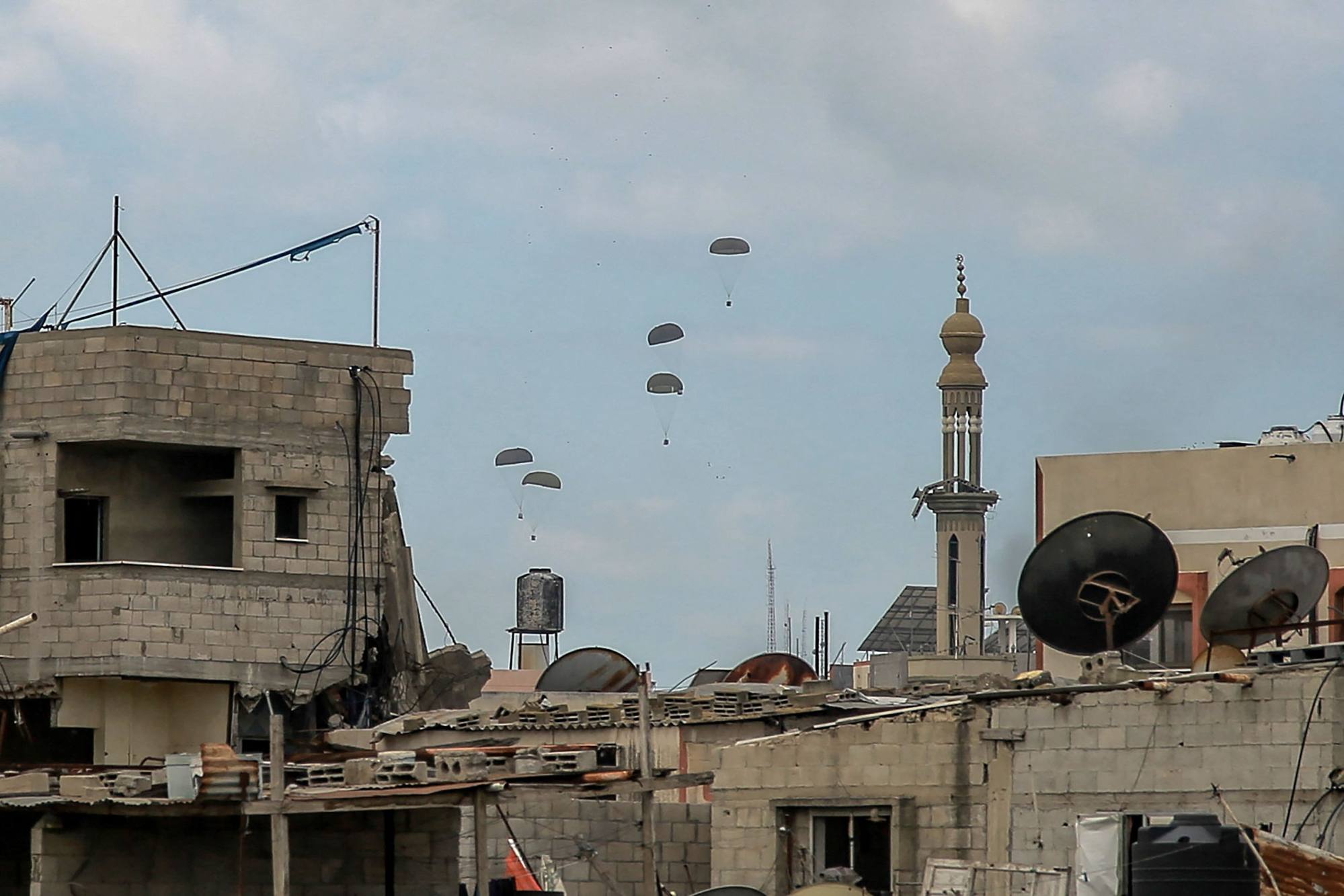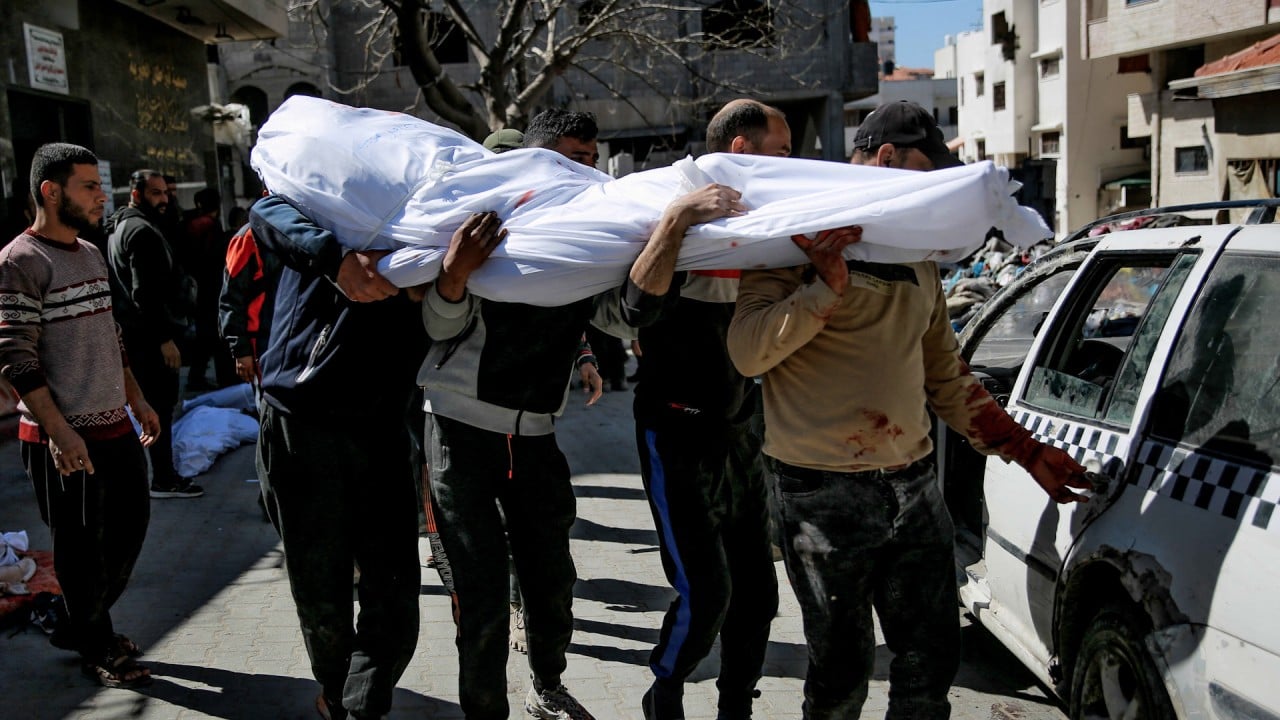
With hardly any aid reaching north Gaza, people there had resorted to feeding their starving children with animal fodder and wild food, the UN Office for the Coordination of Humanitarian Affairs (OCHA) said on March 4, amid the first reports of children dying from malnutrition and dehydration at two hospitals.
The number of such deaths reached 25 on Saturday, according to the Gazan health ministry.
“Indeed, a famine in Gaza is imminent,” Georgios Petropoulos, the Rafah-based head of the OCHA office for Gaza, told This Week in Asia.
“The glaring, glaring problem is our inability to overcome the access issue and actually deliver at scale food and other needed commodities to north Gaza.”
With more than 31,000 Gazans already dead from the war, “the rising deaths from malnutrition and the dozens of children who have already died from this preventable disease really drives this point home to us”, he said.
The looming threat of mass casualties of Gazans from malnutrition and dehydration was “completely preventable”, he said – but only if the requisite high volumes of humanitarian assistance could be scaled up and delivered.
“Now it’s especially notable that everybody in Gaza requires aid,” he said.
Just the volume of the food required to reverse the dire situation is “in the thousands of metric tonnes over days and weeks”.
The UN World Food Programme has estimated that 4,000 tonnes of food is needed weekly to feed Gaza’s 2.2 million people, practically all of whom have been rendered completely dependent on aid since the war erupted five months ago.
Petropoulos said the main challenge facing humanitarian agencies in Gaza was to obtain a sustainable supply of the relief goods needed to feed, treat and house suffering civilians.
“These things come in drips and trickles when they need to be coming in a roaring river of humanitarian aid so that we can use local distribution networks to assist people,” he said, adding the “logistical arrangements” for delivering aid “have to be by land”.
That is, however, an unlikely prospect because Israel’s Prime Minister Benjamin Netanyahu and his war cabinet colleagues have flatly refused to ease arduous restrictions imposed on aid convoys entering Gaza overland from Egypt.

About 500 trucks carrying humanitarian assistance used to enter Gaza daily from Egypt before Hamas triggered the ongoing war last October by launching an unprecedented assault on southern Israel, killing 1,139 people and kidnapping 253 Israeli and foreign nationals.
Israel has drastically reduced the number of trucks to an average of fewer than 100 on days aid convoys are allowed in Gaza.
The US last week announced plans to build a “temporary floating military pier or causeway” off the coast of Gaza to facilitate aid delivery, and also began airdropping aid in coordination with Egypt and three European nations.
But it would take more than 1,000 US soldiers up to 60 days to erect the maritime facility, Pentagon press secretary Brigadier General Pat Ryder said on Friday.
That would be far too late to prevent a feared spike in deaths of children, the elderly, and people with pre-existing illnesses from malnutrition and dehydration in the coming weeks, according to humanitarian groups in Gaza.

A report issued on February 22 by the Global Nutrition Cluster, an alliance of NGOs working with the UN’s children’s agency Unicef, said over 90 per cent of Gazan children aged six to 23 months and pregnant and breastfeeding women faced severe food poverty.
At least 90 per cent of Gazan children under the age of five had been affected by one or more infectious diseases, and 70 per cent had suffered from diarrhoea in the previous two weeks.
The report found that 81 per cent of Gazan households lacked safe and clean water, with average household access measured at less than one litre per person per day – compared to the minimum standard of 15 litres per person per day – being of particular concern for babies being fed infant formula.
Neither the envisaged temporary US port nor ramped up airdrops would have the capacity to deliver the big volumes of aid needed by starving Gazans.
“I’m not sure that the Gaza pier is the solution to that, regardless of how long it takes,” Petropoulos said.

Given the dire situation, he said lessons needed to be learned from the thousands of civilian casualties in the war and “mistakes” and “wrong choices” over access for aid convoys.
He also said it was “absolutely imperative” to understand the importance of the role played by Palestinian NGOs in Gaza.
For the UN to be able to “scale up” aid and services in north Gaza and to work in the southern areas of Khan Younis and Rafah would involve building a stronger partnership with these organisations, he said.
Palestinian NGOs, community-based assistance groups, and charities that had popped up during the war were “not only ready to do more, but they’re already doing the most that they can”, Petropoulos said.
These local partners will “actually show us the best way to do things here in Gaza”.

But a successful international humanitarian intervention would first require the materials comprising the backbone of any large organisation.
“We need to do a better job as an international community to advocate” for supplies ranging from fuel for vehicles and small generators to power displacement-site safe rooms and offices, and to provide aid workers with internet and cellular phone services and equipment.
“We’ve been calling for this for months, but it’s been trickling in at the same time as war damage and continued destruction” of healthcare facilities and other protected-status sites, he said.
This has meant the list of humanitarian assistance needed for Gaza has been growing “bigger and bigger”.
EMEA Tribune is not involved in this news article, it is taken from our partners and or from the News Agencies. Copyright and Credit go to the News Agencies, email [email protected] Follow our WhatsApp verified Channel










